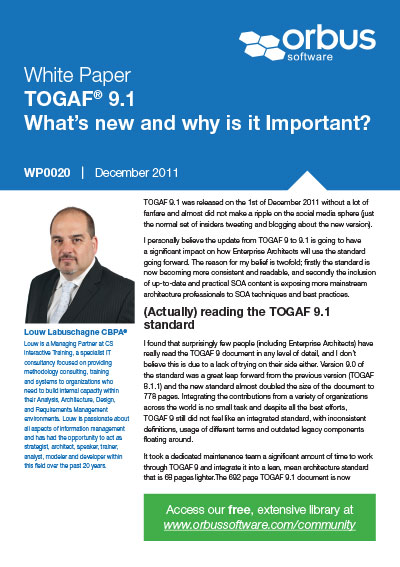A summary of the changes implemented in TOGAF® 9.1 and why they are important for practitioners.
TOGAF 9.1 was released on the 1st of December 2011 without a lot of fanfare and almost did not make a ripple on the social media sphere (just the normal set of insiders tweeting and blogging about the new version). I personally believe the update from TOGAF 9 to 9.1 is going to have a significant impact on how Enterprise Architects will use the standard going forward. The reason for my belief is twofold; firstly the standard is now becoming more consistent and readable, and secondly the inclusion of up-to-date and practical SOA content is exposing more mainstream architecture professionals to SOA techniques and best practices.
I found that surprisingly few people (including Enterprise Architects) have really read the TOGAF 9 document in any level of detail, and I don’t believe this is due to a lack of trying on their side either. Version 9.0 of the standard was a great leap forward from the previous version (TOGAF 8.1.1) and the new standard almost doubled the size of the document to 778 pages. Integrating the contributions from a variety of organizations across the world is no small task and despite all the best efforts, TOGAF 9 still did not feel like an integrated standard, with inconsistent definitions, usage of different terms and outdated legacy components floating around.
Please login to continue reading this ebook from Louw Labuschagne.
